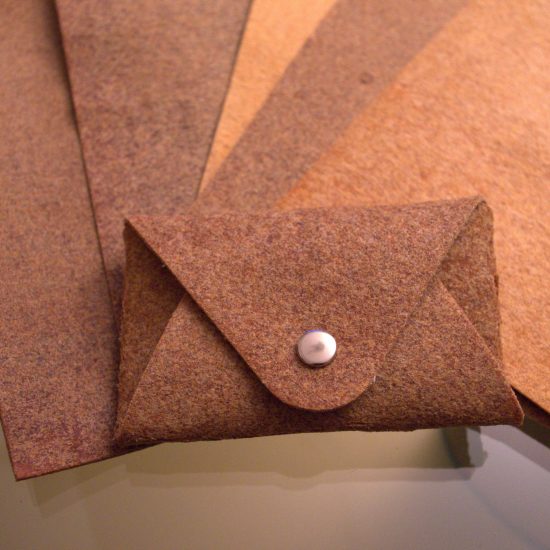
"We realized that our technology could enable to make use of the abundant waste of leather and meat industries"
Interview with 2019 Green Alley Award finalist Gelatex Technologies
Gelatex Technologies from Estonia competed against more than 250 startups and made it to the Green Alley Award finals! The startup has created an eco-friendly alternative to conventional leather using gelatine derived from the low value waste of the meat and leather industries. The material is produced without the use of toxins and comes at half the price. Better still, it is organic and biodegradable which makes it attractive for the fashion and automotive industries. Read all about their product and the challenges ahead.
# What are the advantages of Gelatex compared to conventional leather? (e.g. how long does it take to biodegrade?) And how did you come up with the idea to go for gelatine?
The material is produced using gelatin that is made of low value waste of leather and meat industries, such as skin and bones. This way it is possible to get up to 5 times more material from the same animal. Gelatex material is chemically identical to leather but made using only natural non-toxic substances. The properties of the material such as thickness, texture or even water resistance or biodegradability are customizable during manufacturing process. The material comes on rolls meaning therefore also faster cutting, simplified design process and 15-20% less material waste. When we started to work on Gelatex 3 years ago, then gelatin-based materials had been researched in the University of Tartu in Estonia for a couple of years, me being part of the team. Initially the focus was more on the medical industry but the idea of using the same technology for producing leatherlike textile came up in spring 2016. Gelatex co-founder Mari-Ann was a garment technologist doing her MBA and was interested if there is anybody in Estonia developing some eco-friendly materials and then she found me. We already had an idea by then that we could develop our existing technology for making leather alternative and in collaboration we started to talk to customers and make more research about the industry. We realized that our technology could enable to make use of the abundant waste of leather and meat industries while at the same time solving the problem of mass-fashion and automotive brands of not having eco-friendly materials available in mass-scale.
# You mentioned that Gelatex is aimed to be used mainly in the textile industry. Can Gelatex clothes be washed like conventional garments and can they even be washed in regular washing machines?
We are aiming to produce material with properties similar to leather. That applies for maintenance of the material as well. At first we are aiming to make a material for fashion industry but in longer term we want to develop a material suitable also for furniture and car upholstery.
# Your material derives from animals and is based on the meat industry, which does not necessarily have the reputation to be sustainable. What do you tell customers or concerned consumers?
We really believe that we should reimagine waste and unfortunately still in leather and meat industry there is a lot of it. Gelatex material is produced using gelatin that is made of low value waste of meat industries, such as skin and bones. This way it is possible to get up to 5 times more material from the same animal. Only in EU there is 5M tons of meat industry waste (25% of total meat industry waste) that is just burnt or buried that we can use as our raw-material. With our technology we can give that waste a new life.